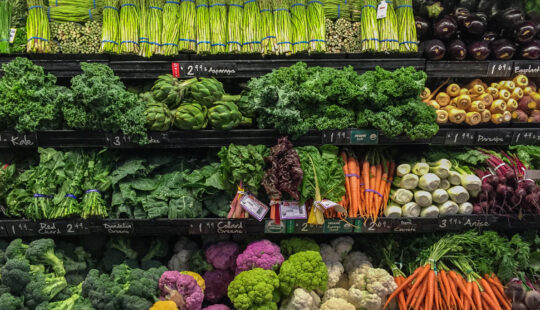Cruise lines are turning to virtual cruises. Travel and tourism are taking the same approach in places like Greece, for example. These are temporary solutions to respond to the current crisis at hand, but they address the greater existential questions about how their industry will in fact respond to the new world, post-coronavirus. Because virtual cruises and tourism can’t compete with the real thing forever, and others will be able to do virtual far better, the process of responding, recovering, and reviving your organization must include building in resilience to weather the next storm.
Travel and hospitality industries find themselves in the same adapt-or-die situation. For now, some hotels are responding by providing rooms for healthcare professionals and first responders who have either gone to work in another city or have decided the risk of carrying infection back to their loved ones is too great. Some airlines have pivoted from carrying passengers to moving cargo and donating masks and airline meals to first responders and those in need.
The first step for any business entering the era of COVID-19 has been simply to respond as appropriately as possible. This usually amounts to warp speed for most organizations. The metaphor of building the plane while flying it has suddenly changed direction to building an off-road vehicle out of plane parts while flying what had been a plane. There’s nothing simple about it.
But success in business requires being highly adaptable. We’ve been building toward swift adaptability through digital transformation, using greater levels of interconnectedness to get closer to real-time visibility and responsiveness to quickly changing conditions. High-speed creative responses, innovation and adaptation are going to remain essential ingredients for building organizational resilience moving forward.
Take Aaron Hornlimann’s quick pivot of his company, Elenium Automation, which “provides check-in and bag drop systems used at 13 airports.” Hornlimann had firsthand accounts about how SARS impacted air travel in Hong Kong and shifted his operations to develop and apply for “patents on a contactless machine that measures vital signs to determine if a would-be traveler is showing symptoms of COVID-19.” As Hornlimann says, “We’re hoping that automated health screening will encourage people to return to travel sooner” and “inspire greater confidence.”
This is the kind of innovation we’re likely to see applied to industries such as air travel, cruise lines, sports, and other events whose offerings are experiences requiring physical presence.
By continuing to develop the Intelligent Enterprise into our built environments we will see how the potential of digital transformation becomes truly essential to building a resilient organization. Business and everyday life will enter a new era and the Fourth Industrial Revolution will be more fully realized, accelerating the delivery of value experiences in a safe way.
Smart environments can assure safety and build trust: If you build it, they will come (back)
A lot has changed and will continue to change in how businesses interact with employees as well as customers. And a lot of what changes won’t be going back to the way things were before.
What will stay the same? The essentials will remain essential, even if they look a bit different. Human relationships built on trust, transparency and empathy are among the most essential for maintaining society and business.
Without question, we will have to change traditional business models to adapt to a post-COVID-19 world. Businesses and industries who expect to survive and have any hope of remaining competitive will likely have to embrace the journey to becoming an Intelligent Enterprise. Many at the forefront have been on this journey for a long time, and many have been working hard to implement their digital transformation if they’re not already digital native.
What’s next: Smart environments will be a necessity going forward
The ways in which businesses interact with customers and employees will necessarily change. Not only by embracing virtual environments, but also our relationships with our built environments will change.
As the economy gets moving again, we’re likely to see big changes to how we experience and interact with our built environments. Stadiums, offices, distribution centers, convention centers and factories as well as cruise ships, airplanes, and hotels have perhaps some of the biggest challenges.
Assuming restrictions on large gatherings and crowds of people are lifted without qualification at some point, customers are not going to feel safe and comfortable for a longer time than these businesses can wait. What can be done when the virus can linger in the air and on surfaces? How do they earn customer’s trust again?
Take Amazon, for example, whose share price hasn’t been impacted, although they are seeing more cases of workers in the warehouses and distribution centers testing positive for COVID-19. In fact, their workers have started protests about the lack of provision for social distancing. So, if they expect to continue with as little interruption as possible, they will have to find a way to ensure the safety of their workers.
But the travel and hospitality industries face incredible challenges to innovate and adapt to creating a different type of experience if social distancing continues in one form or another. The most practical and effective solution may be if we have an amount of rapid detection built into the environment itself. In a world where if we have mini outbreaks, we will need to certify people as healthy, safe, or well, to get onto a cruise ship. Businesses may have to create environments with some level of health monitoring built in. To maintain that safety and allow work and play to resume in anything resembling what we knew as normal will require the ability to ensure the health of each person moving within that environment.
As seen above, the technologies to check temperatures can detect those who are symptomatic, but as we’ve learned, many asymptomatic have transmitted the coronavirus unknowingly, so contact-tracing of individuals becomes a potential solution, and the technology is here and now, as we’ve seen with the partnership between, SAP and Deutsche Telekom.
Companies will need to gather more telemetry about the movement of people within its environments and develop plans for how handle an outbreak in such environments. UV-C lights can kill the virus but are unsafe for anyone in close proximity to the rays. Brightgreen has solved this challenge by linking the lights to sensors which detect movement, which are in use in many spaces anyway. Such lighting solutions can be used overnight in offices, convention centres or in closed areas such as restaurants on cruise ships to eliminate traces of the virus, safely.
Privacy will be a huge concern, of course. On one hand it seems like an authoritarian dystopia. Compound that with the last five years of data breaches and data privacy abuses by the tech giants and the hesitation and knee-jerk distrust doesn’t seem so unreasonable.
Before now such measures would have been out of the question. To allow employers and businesses access to an employee’s or customer’s health data would be unacceptable. Except we’ve been agreeing to similar trade-offs for decades. Many jobs have required drug tests and other regular testing, so we’ve been moving in this direction for some time. Now the technology is there to make it widely applicable with some amount of accuracy. This could be a new “fit-for-work” requirement.
Short of a vaccine that works or treatment to reduce mortality rate, large congregations of people will not happen without the participants consenting to share greater amounts of information about themselves.
What will we take with us?
In this moment, we have a rare opportunity to reevaluate what is necessary. And we have the tools to take action and to design the way forward, helping to keep people safe, whilst maximizing the opportunity to get life back to some sort of normal. What is necessary to retain from life before COVID-19? From economic activity to standardized testing to performances and entertainment, what can we leave in the past and what is worth carrying with us into the future?
The path forward involves a lot of questions, and the core of any successful solution is making sure we ask the right ones. SAP can help companies steer their way through the challenges ahead and help them on their journey to become an Intelligent Enterprise.
Join SAP CEO Christian Klein, members of the Executive Board of SAP and special guests on June 15th to learn how to lead your organization in a period of crisis and economic recovery. Learn more here.



